Andrew Hines
BINAQUAL: A Full-Reference Objective Localization Similarity Metric for Binaural Audio
May 17, 2025Abstract:Spatial audio enhances immersion in applications such as virtual reality, augmented reality, gaming, and cinema by creating a three-dimensional auditory experience. Ensuring the spatial fidelity of binaural audio is crucial, given that processes such as compression, encoding, or transmission can alter localization cues. While subjective listening tests like MUSHRA remain the gold standard for evaluating spatial localization quality, they are costly and time-consuming. This paper introduces BINAQUAL, a full-reference objective metric designed to assess localization similarity in binaural audio recordings. BINAQUAL adapts the AMBIQUAL metric, originally developed for localization quality assessment in ambisonics audio format to the binaural domain. We evaluate BINAQUAL across five key research questions, examining its sensitivity to variations in sound source locations, angle interpolations, surround speaker layouts, audio degradations, and content diversity. Results demonstrate that BINAQUAL effectively differentiates between subtle spatial variations and correlates strongly with subjective listening tests, making it a reliable metric for binaural localization quality assessment. The proposed metric provides a robust benchmark for ensuring spatial accuracy in binaural audio processing, paving the way for improved objective evaluations in immersive audio applications.
Binamix -- A Python Library for Generating Binaural Audio Datasets
May 02, 2025Abstract:The increasing demand for spatial audio in applications such as virtual reality, immersive media, and spatial audio research necessitates robust solutions to generate binaural audio data sets for use in testing and validation. Binamix is an open-source Python library designed to facilitate programmatic binaural mixing using the extensive SADIE II Database, which provides Head Related Impulse Response (HRIR) and Binaural Room Impulse Response (BRIR) data for 20 subjects. The Binamix library provides a flexible and repeatable framework for creating large-scale spatial audio datasets, making it an invaluable resource for codec evaluation, audio quality metric development, and machine learning model training. A range of pre-built example scripts, utility functions, and visualization plots further streamline the process of custom pipeline creation. This paper presents an overview of the library's capabilities, including binaural rendering, impulse response interpolation, and multi-track mixing for various speaker layouts. The tools utilize a modified Delaunay triangulation technique to achieve accurate HRIR/BRIR interpolation where desired angles are not present in the data. By supporting a wide range of parameters such as azimuth, elevation, subject Impulse Responses (IRs), speaker layouts, mixing controls, and more, the library enables researchers to create large binaural datasets for any downstream purpose. Binamix empowers researchers and developers to advance spatial audio applications with reproducible methodologies by offering an open-source solution for binaural rendering and dataset generation. We release the library under the Apache 2.0 License at https://github.com/QxLabIreland/Binamix/
Respiratory Inhaler Sound Event Classification Using Self-Supervised Learning
Apr 15, 2025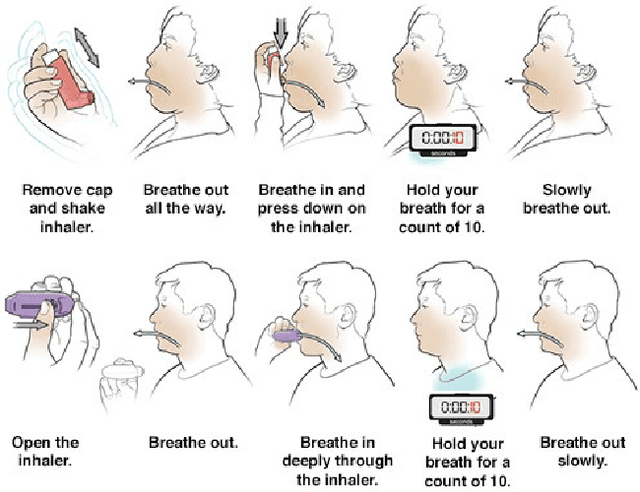
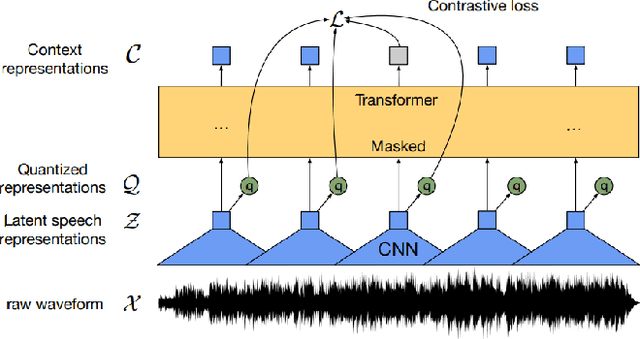
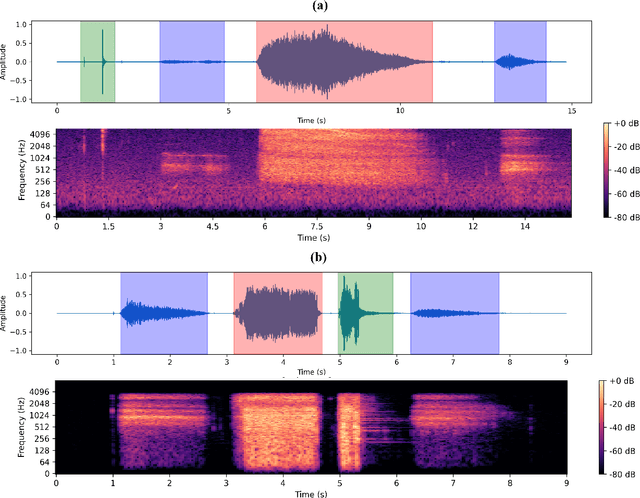

Abstract:Asthma is a chronic respiratory condition that affects millions of people worldwide. While this condition can be managed by administering controller medications through handheld inhalers, clinical studies have shown low adherence to the correct inhaler usage technique. Consequently, many patients may not receive the full benefit of their medication. Automated classification of inhaler sounds has recently been studied to assess medication adherence. However, the existing classification models were typically trained using data from specific inhaler types, and their ability to generalize to sounds from different inhalers remains unexplored. In this study, we adapted the wav2vec 2.0 self-supervised learning model for inhaler sound classification by pre-training and fine-tuning this model on inhaler sounds. The proposed model shows a balanced accuracy of 98% on a dataset collected using a dry powder inhaler and smartwatch device. The results also demonstrate that re-finetuning this model on minimal data from a target inhaler is a promising approach to adapting a generic inhaler sound classification model to a different inhaler device and audio capture hardware. This is the first study in the field to demonstrate the potential of smartwatches as assistive technologies for the personalized monitoring of inhaler adherence using machine learning models.
SCOREQ: Speech Quality Assessment with Contrastive Regression
Oct 09, 2024Abstract:In this paper, we present SCOREQ, a novel approach for speech quality prediction. SCOREQ is a triplet loss function for contrastive regression that addresses the domain generalisation shortcoming exhibited by state of the art no-reference speech quality metrics. In the paper we: (i) illustrate the problem of L2 loss training failing at capturing the continuous nature of the mean opinion score (MOS) labels; (ii) demonstrate the lack of generalisation through a benchmarking evaluation across several speech domains; (iii) outline our approach and explore the impact of the architectural design decisions through incremental evaluation; (iv) evaluate the final model against state of the art models for a wide variety of data and domains. The results show that the lack of generalisation observed in state of the art speech quality metrics is addressed by SCOREQ. We conclude that using a triplet loss function for contrastive regression improves generalisation for speech quality prediction models but also has potential utility across a wide range of applications using regression-based predictive models.
Dialogue Understandability: Why are we streaming movies with subtitles?
Mar 22, 2024



Abstract:Watching movies and TV shows with subtitles enabled is not simply down to audibility or speech intelligibility. A variety of evolving factors related to technological advances, cinema production and social behaviour challenge our perception and understanding. This study seeks to formalise and give context to these influential factors under a wider and novel term referred to as Dialogue Understandability. We propose a working definition for Dialogue Understandability being a listener's capacity to follow the story without undue cognitive effort or concentration being required that impacts their Quality of Experience (QoE). The paper identifies, describes and categorises the factors that influence Dialogue Understandability mapping them over the QoE framework, a media streaming lifecycle, and the stakeholders involved. We then explore available measurement tools in the literature and link them to the factors they could potentially be used for. The maturity and suitability of these tools is evaluated over a set of pilot experiments. Finally, we reflect on the gaps that still need to be filled, what we can measure and what not, future subjective experiments, and new research trends that could help us to fully characterise Dialogue Understandability.
NOMAD: Unsupervised Learning of Perceptual Embeddings for Speech Enhancement and Non-matching Reference Audio Quality Assessment
Sep 28, 2023Abstract:This paper presents NOMAD (Non-Matching Audio Distance), a differentiable perceptual similarity metric that measures the distance of a degraded signal against non-matching references. The proposed method is based on learning deep feature embeddings via a triplet loss guided by the Neurogram Similarity Index Measure (NSIM) to capture degradation intensity. During inference, the similarity score between any two audio samples is computed through Euclidean distance of their embeddings. NOMAD is fully unsupervised and can be used in general perceptual audio tasks for audio analysis e.g. quality assessment and generative tasks such as speech enhancement and speech synthesis. The proposed method is evaluated with 3 tasks. Ranking degradation intensity, predicting speech quality, and as a loss function for speech enhancement. Results indicate NOMAD outperforms other non-matching reference approaches in both ranking degradation intensity and quality assessment, exhibiting competitive performance with full-reference audio metrics. NOMAD demonstrates a promising technique that mimics human capabilities in assessing audio quality with non-matching references to learn perceptual embeddings without the need for human-generated labels.
Reduce, Reuse, Recycle: Is Perturbed Data better than Other Language augmentation for Low Resource Self-Supervised Speech Models
Sep 22, 2023



Abstract:Self-supervised representation learning (SSRL) has improved the performance on downstream phoneme recognition versus supervised models. Training SSRL models requires a large amount of pre-training data and this poses a challenge for low resource languages. A common approach is transferring knowledge from other languages. Instead, we propose to use audio augmentation to pre-train SSRL models in a low resource condition and evaluate phoneme recognition as downstream task. We performed a systematic comparison of augmentation techniques, namely: pitch variation, noise addition, accented target-language speech and other language speech. We found combined augmentations (noise/pitch) was the best augmentation strategy outperforming accent and language knowledge transfer. We compared the performance with various quantities and types of pre-training data. We examined the scaling factor of augmented data to achieve equivalent performance to models pre-trained with target domain speech. Our findings suggest that for resource constrained languages, in-domain synthetic augmentation can outperform knowledge transfer from accented or other language speech.
Exploring the Impact of Noise and Degradations on Heart Sound Classification Models
Nov 14, 2022



Abstract:The development of data-driven heart sound classification models has been an active area of research in recent years. To develop such data-driven models in the first place, heart sound signals need to be captured using a signal acquisition device. However, it is almost impossible to capture noise-free heart sound signals due to the presence of internal and external noises in most situations. Such noises and degradations in heart sound signals can potentially reduce the accuracy of data-driven classification models. Although different techniques have been proposed in the literature to address the noise issue, how and to what extent different noise and degradations in heart sound signals impact the accuracy of data-driven classification models remains unexplored. To answer this question, we produced a synthetic heart sound dataset including normal and abnormal heart sounds contaminated with a large variety of noise and degradations. We used this dataset to investigate the impact of noise and degradation in heart sound recordings on the performance of different classification models. The results show different noises and degradations affect the performance of heart sound classification models to a different extent; some are more problematic for classification models, and others are less destructive. Comparing the findings of this study with the results of a survey we previously carried out with a group of clinicians shows noise and degradations that are more detrimental to classification models are also more disruptive to accurate auscultation. The findings of this study can be leveraged to develop targeted heart sound quality enhancement approaches - which adapt the type and aggressiveness of quality enhancement based on the characteristics of noise and degradation in heart sound signals.
Learning Music Representations with wav2vec 2.0
Oct 27, 2022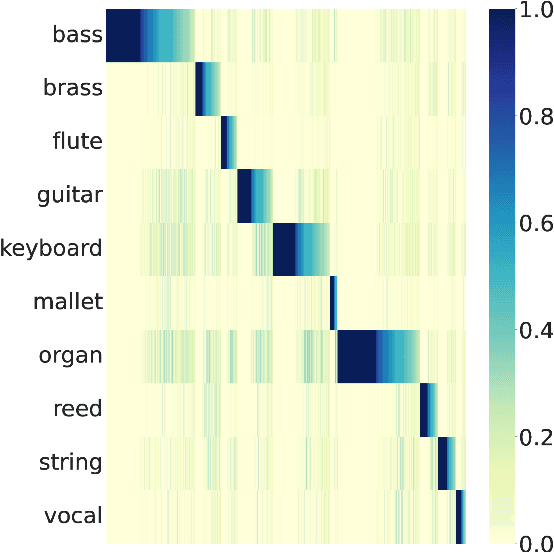
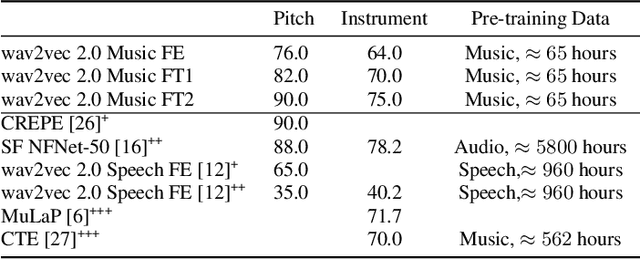
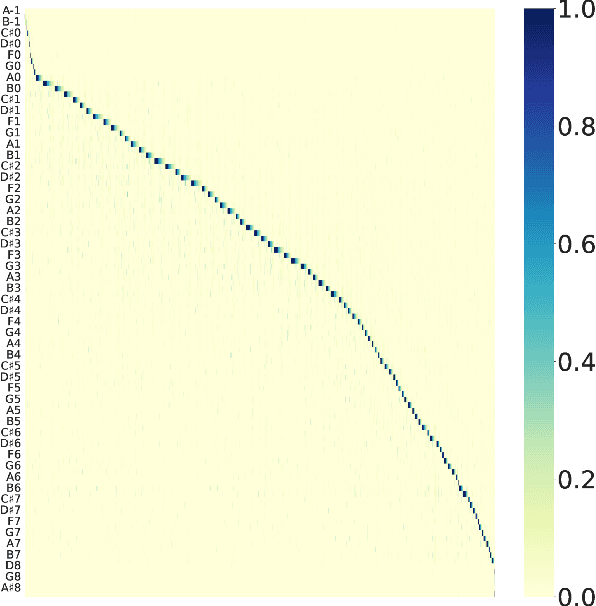
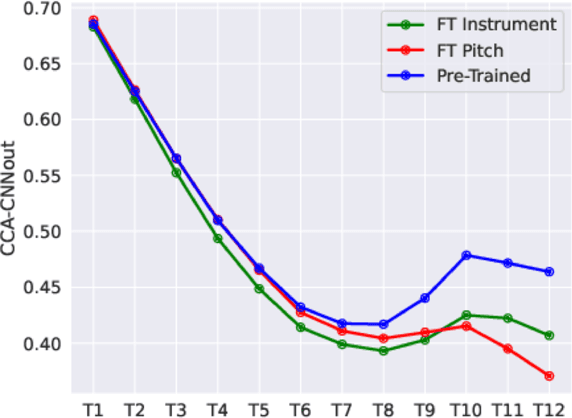
Abstract:Learning music representations that are general-purpose offers the flexibility to finetune several downstream tasks using smaller datasets. The wav2vec 2.0 speech representation model showed promising results in many downstream speech tasks, but has been less effective when adapted to music. In this paper, we evaluate whether pre-training wav2vec 2.0 directly on music data can be a better solution instead of finetuning the speech model. We illustrate that when pre-training on music data, the discrete latent representations are able to encode the semantic meaning of musical concepts such as pitch and instrument. Our results show that finetuning wav2vec 2.0 pre-trained on music data allows us to achieve promising results on music classification tasks that are competitive with prior work on audio representations. In addition, the results are superior to the pre-trained model on speech embeddings, demonstrating that wav2vec 2.0 pre-trained on music data can be a promising music representation model.
Using Rater and System Metadata to Explain Variance in the VoiceMOS Challenge 2022 Dataset
Sep 14, 2022
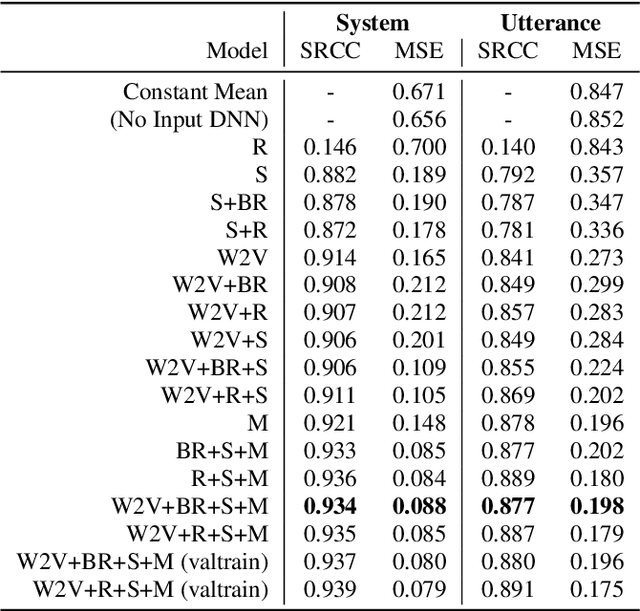
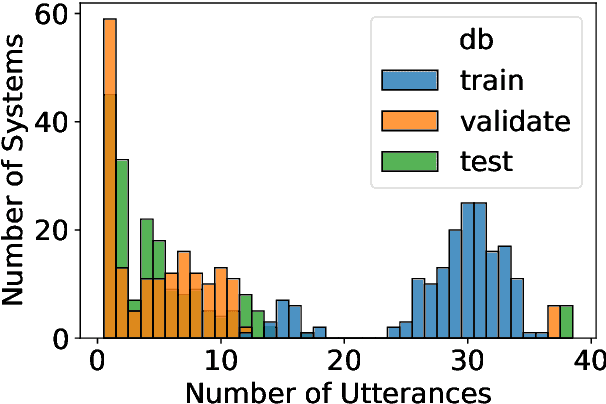
Abstract:Non-reference speech quality models are important for a growing number of applications. The VoiceMOS 2022 challenge provided a dataset of synthetic voice conversion and text-to-speech samples with subjective labels. This study looks at the amount of variance that can be explained in subjective ratings of speech quality from metadata and the distribution imbalances of the dataset. Speech quality models were constructed using wav2vec 2.0 with additional metadata features that included rater groups and system identifiers and obtained competitive metrics including a Spearman rank correlation coefficient (SRCC) of 0.934 and MSE of 0.088 at the system-level, and 0.877 and 0.198 at the utterance-level. Using data and metadata that the test restricted or blinded further improved the metrics. A metadata analysis showed that the system-level metrics do not represent the model's system-level prediction as a result of the wide variation in the number of utterances used for each system on the validation and test datasets. We conclude that, in general, conditions should have enough utterances in the test set to bound the sample mean error, and be relatively balanced in utterance count between systems, otherwise the utterance-level metrics may be more reliable and interpretable.
 Add to Chrome
Add to Chrome Add to Firefox
Add to Firefox Add to Edge
Add to Edge